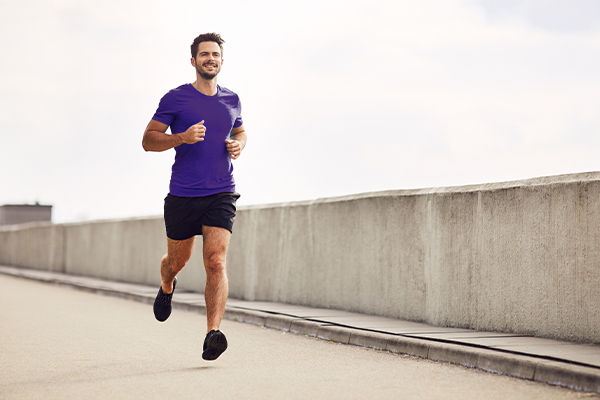There’s a reason so many novice runners set a 5k running race as their first goal. First, the couch-to-5k promise is a realistic goal for nearly anyone, even if they haven’t run since middle school P.E. class 20 years ago. A 5k — that’s 3.1 miles — is a short running race that usually takes beginners 30 to 40 minutes to complete. Best of all, getting in shape to finish one only requires a minimum of three 20-40 minute runs a week and roughly 7-12 weeks of training.
The beauty of the 5k race goal is that you’re motivated to stick to your running. If you stick to your running, you’re more likely to make running a habit. And once it’s a habit, distances that seem impossible now — a half-marathon or even a full marathon — will be absolutely achievable.
Want To Run a 5K? You Need a Plan
Couch-to-5K running plans for beginners flood the Internet and lay out similar basic instructions. Start with a run/walk sequence to get through those first couple of weeks of workouts. Give yourself a day off after each run to let your body recover and adapt to the new load on your body. Don’t worry about running hard or fast or long; run at a conversational pace. (If you’re too winded to talk with a running partner, you’re working too hard.) Your body has to learn how to run and find its natural stride before you can turn on the speed and intensity.
Easy enough. But these beginner running plans don’t account for your current fitness level and where you are on your fitness journey. Instead, they serve as a low-risk entry into the sport where, unfortunately, you need to figure out what works through trial and error. Is the workout too easy? Too hard? An athlete who’s spent the last 20 years as a serious road cyclist and mountain biker will respond very differently to novice training than a new mother looking for a productive way to get out of the house and take care of herself. A coach can help each find a training plan that fits their goal — and their current fitness.
How an AI Coach Increases the Odds of Running Success
A coach will set you up with a training plan matched to your fitness level, athletic history, and time constraints. A coach will adjust your training plan to account for an illness, a business trip, or if you’re finding things too easy or hard. A coach removes a mountain of doubt from the process, letting you focus on each workout and nothing else. A coach can also be expensive.
Humango’s AI coaching app does everything above but for much less. Plus, it can adjust your next workout. Was it too easy? Too hard? Hit “replan” and it’ll modify your next workouts accordingly. As such, you know that every run is the very best one you should be doing. It won’t elevate your risk of injury by giving you a workout that’s too hard, and it won’t give you one that’s so easy you won’t see an increase in your endurance.
Best of all, after you finish your first 5k (which you will), an AI app can take that data from your couch-to-5k journey and show you how that half-marathon is now possible.
Running Tips for Beginners
Running Shoes: There’s only one simple rule for your first pair of running shoes: Buy shoes that fit comfortably. A dedicated running shoe store can show you what to look for in a well-fitting running shoe and help you find a comfortable pair you want to run in.
Nutrition: Eat a snack at least one hour before you run to fuel up for your workout and give your body enough time to digest it. Afterward, eat a small snack within 15 minutes of finishing your run. This timely nutrition will speed up your recovery.
Warm-up: Skip stretching before you start running. Instead, try a range-of-motion, dynamic warm-up to get the blood flowing through your joints and muscles. Stretch afterward to aid recovery and help reduce muscle soreness.








